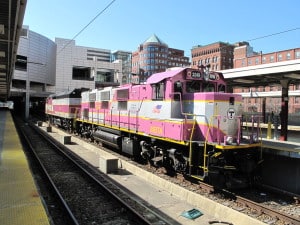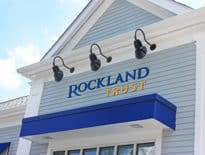Two elected officials and two transportation advocates who studied potential commuter rail changes endorsed a $28.9 billion plan on Monday to transform the system, setting up a key decision for the MBTA – and the legislature that would foot the bill – on how to proceed.
The 22-person Rail Vision Advisory Committee did not, as a body, outright endorse any one of the six options it studied for more than a year. But in a presentation to T officials on Monday, four members explicitly backed the most substantial alternative on the table, which would see nearly subway-like levels of service, and several others offered support for most of the broad changes that plan includes.
Now that the commission has found significant benefits are likely to come from running more frequent, electrified commuter rail trains, the question shifts to what the MBTA will embrace and, as the House prepares for a debate on transportation revenue, how much funding the legislature is willing to contribute.
After hearing testimony from members about the study Monday, the T’s Fiscal and Management Control Board is tentatively scheduled to vote on a path forward for the commuter rail next week.
“We need to think bold,” said Lynn Mayor Thomas McGee, a former co-chairman of the Legislature’s Transportation Committee and architect of a 2013 transportation funding law. “We’re hearing that message across the region. We’re at a crisis stage and we need to make it happen.”
Business, Municipalities Back Big Vision
McGee joined Beverly Mayor Michael Cahill, Stephanie Cronin of the Middlesex 3 Coalition, and A Better City CEO Rick Dimino to call for the Fiscal and Management Control Board to embrace the plan, collectively referred to as a “full transformation” of the commuter rail to a system its supporters often call “regional rail.”
Under that alternative, with a projected capital cost of $28.9 billion in 2020 dollars or $40.7 billion in 2030 dollars, the T would add almost 60 miles of tracks, electrify the system, and run trains in both directions every 15 minutes. The committee’s study projected an increase in daily boardings of 225,9000 with that model, assuming development of additional parking and lowering fares at inner core stations.
Other options the committee studied range from building up frequency only at those inner core stations with electric trains to a simple boost in frequency, the latter of which was projected to cost $1.7 billion.
The sixth option would create a more regionally equitable system, Advisory Committee members said, than the current schedule that emphasizes morning service into Boston and afternoon service out of the city.
Worcester Chamber of Commerce President and CEO Tim Murray, who said the full transformation is “something we should be striving for,” said he was frustrated that the outbound trains he might take in the afternoon had gaps of nearly two hours between them.
“To think we’ve got the two largest cities in New England that have that gap l you just take a whole huge cross-section of people out of the equation,” Murray said. “What does that mean in terms of economic opportunity, educational opportunity, and the like?”
‘The Question Is … Political Will’
Speakers touted the environmental benefits of electric trains rather than the current diesel models – particularly given that transportation accounts for roughly 40 percent of the state’s greenhouse gas emissions – and the role that public transit needs to play in reducing roadway congestion that the Baker administration concluded is past a “tipping point.”
Two legislators who sat on the Advisory Committee, Rep. Carolyn Dykema and Sen. William Brownsberger, were less forceful than their fellow members in embracing a specific option among those studied.
In an interview after the meeting, Dykema said the “full transformation” route was ideal “absent financial constraints,” but noted that the price tag poses challenges.
“It’s absolutely feasible,” she said. “The question is generating the political will to pay for it. The numbers here are clearly a very rough estimate. This is a planning level exercise. I fully expect the next level of conversation will be really getting to the next level where we sharpen our pencil and try to figure out more precisely how much things are going to cost and is there a way in the short term to get significant distance toward [full transformation] within a reasonable budget.”
Brownsberger said he believes the frequency and electrification elements of the plan are “generally where people want to be,” but he said the bigger decision on the table right now is identifying which improvements should be done in what sequence.
“I think the bang for the buck decision is not which model do you want, but what is the migration path toward greatly improved service and what are the steps you take first?” Brownsberger told the News Service.




 |
| 

